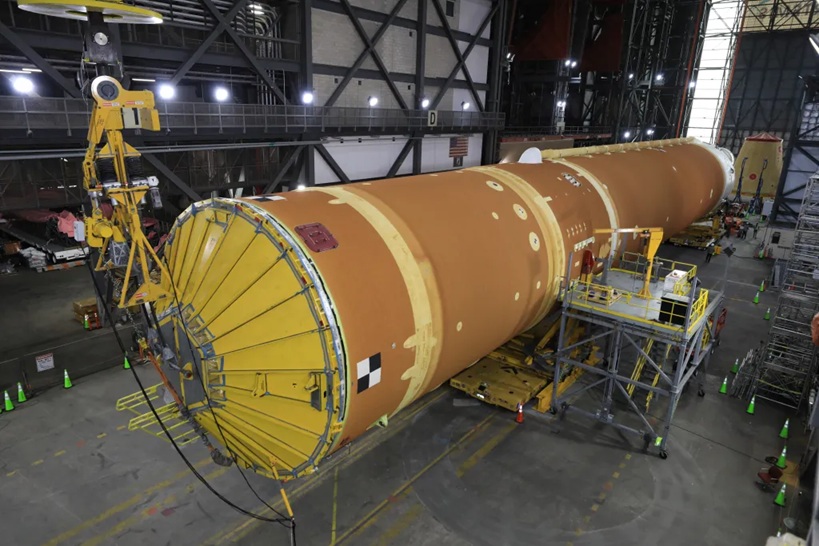
14 Mar 2025
Technicians used massive cranes inside NASA’s Vehicle Assembly Building (VAB) at the agency’s Kennedy Space Center in Florida to lift the SLS (Space Launch System) core stage out of High Bay 2 and into a horizontal position in the facility’s transfer aisle. The move, completed on March 14, prepares the stage for integration with other elements of the rocket later this month.
The operation entailed vertically hoisting the 212-foot tall core stage, which weighs about 219,000 pounds with its engines, out of a stand it had been in since December that allowed engineers 360-degree access to interior and exterior elements of the rocket to enable final assembly and inspection activities.
In the transfer aisle, technicians will conduct final checkouts of the core stage before it is integrated with the completed twin solid rocket booster segments. During integration operations, teams with NASA’s Exploration Ground Systems Program will lift and secure the rocket stage atop the mobile launcher inside High Bay 3 in the VAB.
Next year, the Artemis II mission will carry four astronauts – NASA astronauts Reid Wiseman, Victor Glover, and Christina Koch, and CSA (Canadian Space Agency) astronaut Jeremy Hansen – around the Moon. The mission is the first crewed flight under NASA’s Artemis campaign and is another step toward missions on the lunar surface and helping the agency prepare for future human missions to Mars.
[Image]
Technicians from NASA’s Exploration Ground Systems use massive cranes inside the agency’s Vehicle Assembly Building (VAB) to lift the fully assembled SLS (Space Launch System) core stage vertically 225 feet above the ground from High Bay 2 to a horizontal position in the facility’s transfer aisle at NASA’s Kennedy Space Center in Florida on Friday, March 14, 2025. The 212-foot core stage will undergo final checkouts before being lifted into the VAB’s High Bay 3 for integration alongside the completed stack of twin solid rocket booster segments.
